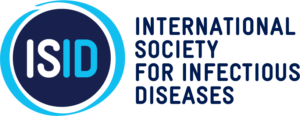The global burden of fungal infections is growing at an alarming rate, with misdiagnosis contributing to severe and potentially life-threatening consequences. Global estimates suggest an annual incidence of 6.5 million invasive fungal infections, associated with approximately 3.8 million mortalities, of which 2.5 million (68%; range 35-90%) are directly attributable to these infections. Each year, over 2.1 million people develop invasive aspergillosis, mainly those with chronic obstructive pulmonary disease, intensive care patients, blood or lung cancer patients, with an alarming 85.2% mortality rate. Chronic pulmonary aspergillosis affects 1.84 million people annually, with a significant mortality rate of 18.5% (340,000 deaths). Candida infections claim nearly 1 million lives annually, affecting 1.57 million people worldwide, with a staggering 63.6% mortality rate. Pneumocystis pneumonia claims over 214,000 lives annually, impacting 505,000 individuals worldwide, with a significant mortality rate of 42.4%. Annual estimates indicate that 194,000 individuals develop Cryptococcal meningitis, associated with 147,000 fatalities (75.8% mortality rate)1.
The growing threat of fungal infections demands immediate attention. Enhanced awareness and understanding of fungal infections are essential across clinical, laboratory, and community settings to mitigate associated morbidity and mortality, and promote patient safety. The area of fungal infections requires a comprehensive understanding of the complex challenges involved. Fungal diagnostics remained one of the serious obstacle in many healthcare settings. Diagnosis of fungi require advanced expensive laboratory systems and expertise, which are often unaffordable in resource limited settings. The lack of diagnostic capabilities results in a significant number of fungal infections going undetected, thereby compromising patient safety and undermining the accuracy of disease burden assessments. The emergence and spread of antifungal resistance have become a pressing concern, requiring necessary attention. There are limited antifungals available which further highlights the importance of awareness, preventive measures, and early diagnosis and treatment to mitigate the impact of fungal disease. The rise of resistant dermatophyte and Candida auris strains across the globe has led to many treatment failures and increased mortality 2. Rising temperatures and altered ecosystems create ideal conditions for fungal pathogens to evolve, thrive, and invade new areas3. This emphasizes more attention towards fungal surveillance and research.
To combat the growing burden of fungal infections, it's essential to address these challenges through a multifaceted approach that involves healthcare professionals, researchers, policymakers, and the public. World Health Organization has released a Fungal Priority Pathogens List to guide research, development, and public health action. This list is the first global effort to systematically prioritize fungal pathogens, considering their unmet research and development needs and public health importance4. Centers for Disease Control and Prevention USA has taken initiatives including Candida auris surveillance, building laboratory capacities, using data for action, and outbreak response. Global Action Fund for Fungal Infections (GAFFI) has produced a roadmap for the reduction of fungal diseases, and it explains essential requirements for effective diagnostic administration. Similarly, International Society for Human and Animal Mycology (ISHAM), ECDC, Mycoses Study Group (MSGERC), Fungal Infection Trust, Asia Fungal Working Group, British Mycology Society, International Mycological Association, and many other organizations are working tirelessly to highlight the burden of fungal infections and advance efforts to prevent, diagnose, and treat these diseases. The challenges can be best addressed by promoting awareness, antifungal stewardship, training on laboratory diagnosis, establishing surveillance systems, access to new antifungals, infection prevention and control measures, and research and development.
Fungal Disease Awareness Week (FDAW) held every year in September 16-20 which highlights that the fungal diseases are increasing worldwide, and necessary actions need to be taken to overcome the threat. Awareness is crucial as with increased knowledge and understanding, everyone can contribute to address the challenges posed by fungal infections. Enhanced awareness of fungal diseases among healthcare providers and the public facilitates informed discussions, prompt consideration of fungal etiologies, and appropriate diagnostic testing.
Written By ISID Emerging Leader, Dr. Afreenish Amir
